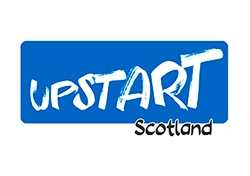SCOTLAND’S children are Scotland’s future. To realise their full potential, they need the very best start in life. The Western countries with the best records in education don’t start formal schooling till children are six or seven. They have chosen to invest in a kindergarten stage based on well-established principles of child development.
In today’s fast-moving, high-pressure world, children need more opportunities to learn through play – especially outdoors – to develop their spoken language and social skills, and to build sound foundations for academic achievement.
Current Scottish policy supports a developmental approach, but the structure of our schooling system makes it difficult to deliver. A statutory kindergarten stage for all three to six year olds followed by a later school-start would be transformational and help reduce the attainment gap by placing more emphasis on wellbeing and removing academic pressures to succeed at such a young age.
For more than six years, Upstart Scotland has tried to convince the Scottish Government that pressurising young children to read, write and reckon before they’re developmentally ready is counter-productive. We should instead assess five-year-olds’ all-round development, as they do in Canada and Australia. And if we really want to close the attainment gap and reduce the number of additional needs in schools and the terrifying rise in mental health problems among children and young people, we should turn Curriculum for Excellence’s “early level” into a statutory, relationship-centred, play-based kindergarten stage. Preserving the status quo is not an option.
The proposal likely to be debated at SNP Conference has the backing of parents, teachers, early years and health professionals across Scotland. It isn’t about deferring children on an ad-hoc basis or using the words “play-based” to describe vastly different pedagogical practices. It’s about giving every child in Scotland three years of quality, statutory kindergarten and developmentally-appropriate care and education.
Sue Palmer & Kate Johnston, Upstart Scotland campaign
Patricia Anderson & Diane Delaney, Give Them Time campaign
Tam Baillie, Commissioner for Children and Young People 2009-2017
John Carnochan OBE QPM FFPH, co-founder of the Scottish Violence Reduction Unit
Mary Glasgow, Chief Executive, Children 1st
Gerry Hassan, Professor of Social Change, Glasgow Caledonian University
Marguerite Hunter Blair, Chief Executive, Play Scotland
Dawn Ewan, Founder and Director, Mucky Boots Outdoor Nursery
John Frank, Professor of Public Health, University of Edinburgh
Willie French, Headteacher, Haddington Primary School
Pat Kane, musician, writer, political activist
Cathy McCulloch, co-Founder and co-Director of Scotland’s Children’s Parliament
Dr Lynn McNair OBE, Senior Teaching Fellow, Edinburgh University
Lesley Riddoch, broadcaster and journalist
Colwyn Trevarthen, Professor of Child Psychology and Psychobiology, University of Edinburgh
Dr Suzanne Zeedyk, developmental neuroscientist, co-founder ACE-Aware Nation

